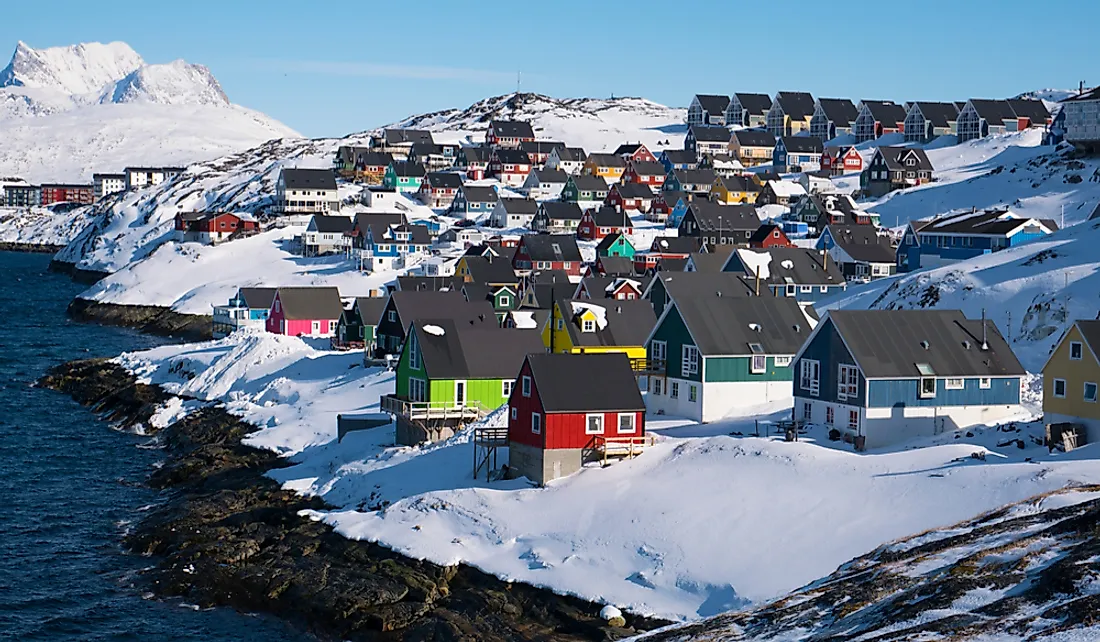What Type Of Climate Does Greenland Have?

Greenland is one of the coldest countries in the world since almost the whole year the temperatures are below zero degrees Celsius (32˚F). Greenland is surrounded by seas that are either permanently frozen or chilled by cold currents. Fjords separate the inland ice areas with the seas. The country is also the world’s biggest island covering a land area of 2,166,086 square kilometers. However, 85% of the land area is covered in ice sheets that are approximately 1500 m thick. The rest of the land area is the coastal area where most of the population of Greenland lives. It is only at the coast that temperatures rise above the freezing point. Typically, these relatively high temperatures are experienced in summer. Greenland is popular for its unique Inuit culture which has been preserved for centuries. It is also fondly known as the kingdom of whales, seals, and walruses.
The Climate of Greenland
Greenland exhibits a type of climate known as the Arctic climate. However, due to its vast land area, there are variations in its weather whereby some parts of the country are very cold compared to the rest. It is only the coast of Greenland, which is also the southern parts of Greenland that sometimes experiences temperatures above the freezing point. The country experiences large variations in temperatures as well as rainfall even over short distances. Greenland’s climate is also characterized by low humidity which makes it possible for a person to see farther than usually possible in other parts of the world. The low humidity is accompanied by dry air.
In southern Greenland, the temperatures may go beyond 20 °C (68˚F) in the summer months of June, July, and August. On the other hand, it freezes during winter with temperatures getting as low as -10 °C (14˚F). Coastal Greenland borders the Arctic Ocean which results in a high amount of rainfall: an average of 2,000-2,500 mm yearly.
During summer, Greenland becomes magnificently green as the plants sprout to life with the melting of some of the ice sheets. The country’s low humidity makes the summer feel warmer than usual. The day temperatures may rise as high as 68˚F with the warmest months being July and August. The temperatures in the two months range from 10 °C (50 ˚F) to 12 °C (53.6˚F). It rains more in summer than it does in winter.
Greenland’s winter becomes very cold; especially in the north. However, it does not feel as cold as it ought to due to the low humidity. There are two towns located in northern Greenland: Upernavik and Kangerlussuaq. Upernavik’s temperatures may go as low as -20 °C (-4˚F) while Kangerlussuaq’s temperatures decrease to a low of -21 °C (-5.8˚F). Generally, the temperatures in winter are below freezing point and range from -21 °C (-5.8˚F) to -0.8 °C (30.5˚F).
The Winds and Rainfall in Greenland
Typically, it is not so windy in Greenland. However, the country sometimes experiences very strong winds known as the föhn winds that often come after the lens-shaped clouds. Originally used to describe the winds found within the European Alps region, föhn winds in Greenland are characterized by strong winds that travel at a speed of 178.6 km/h (111 mph). They normally symbolize the coming of the rains. The presence of winds during the winter results in the chill factor.
Much as Greenland normally experiences chilly weather, it rarely rains. Based on the little rain experienced, the south receives more rains than the north. For instance, a town in the south known as Nanortalik receives 900 mm of rain annually. However, the northern town of Upernavik only receives 200 mm of rain per year. Northeastern Greenland receives less rainfall than that which the famous Sahara Desert receives. Consequently, this part of Greenland is known as the Arctic Desert.
Interesting Facts About the Climate of Greenland
Some of the unique facts about Greenland is that the sun shines for 24 hours continuously for the three consecutive months of May, June, and July. This phenomenon is referred to as the midnight sun. Moreover, Greenland also experiences winter darkness which is about 20 hours of darkness and only 3-4 hours of daylight. Greenland is known for having the best air quality of air in the world due to its proximity to the earth’s North Pole.











